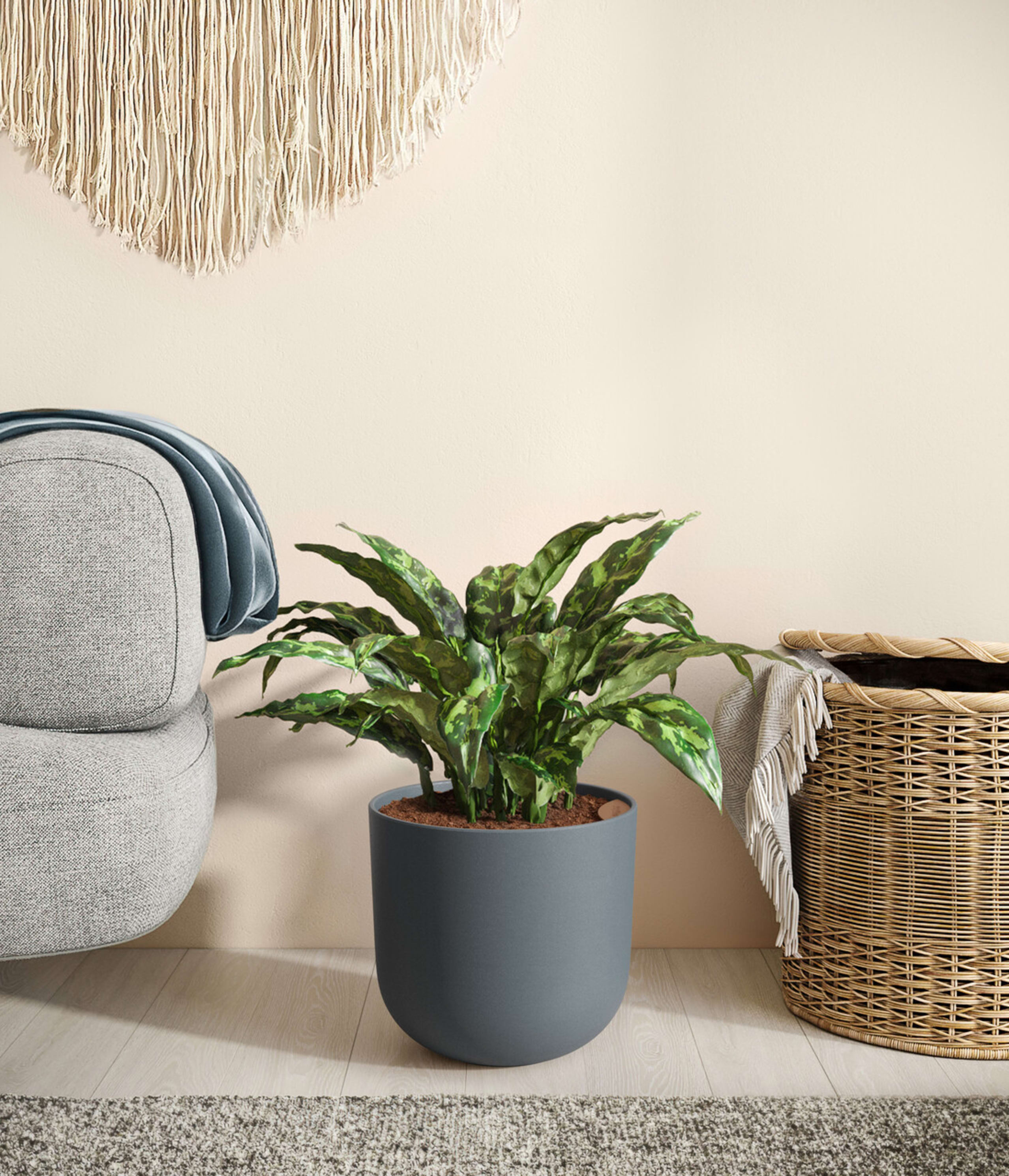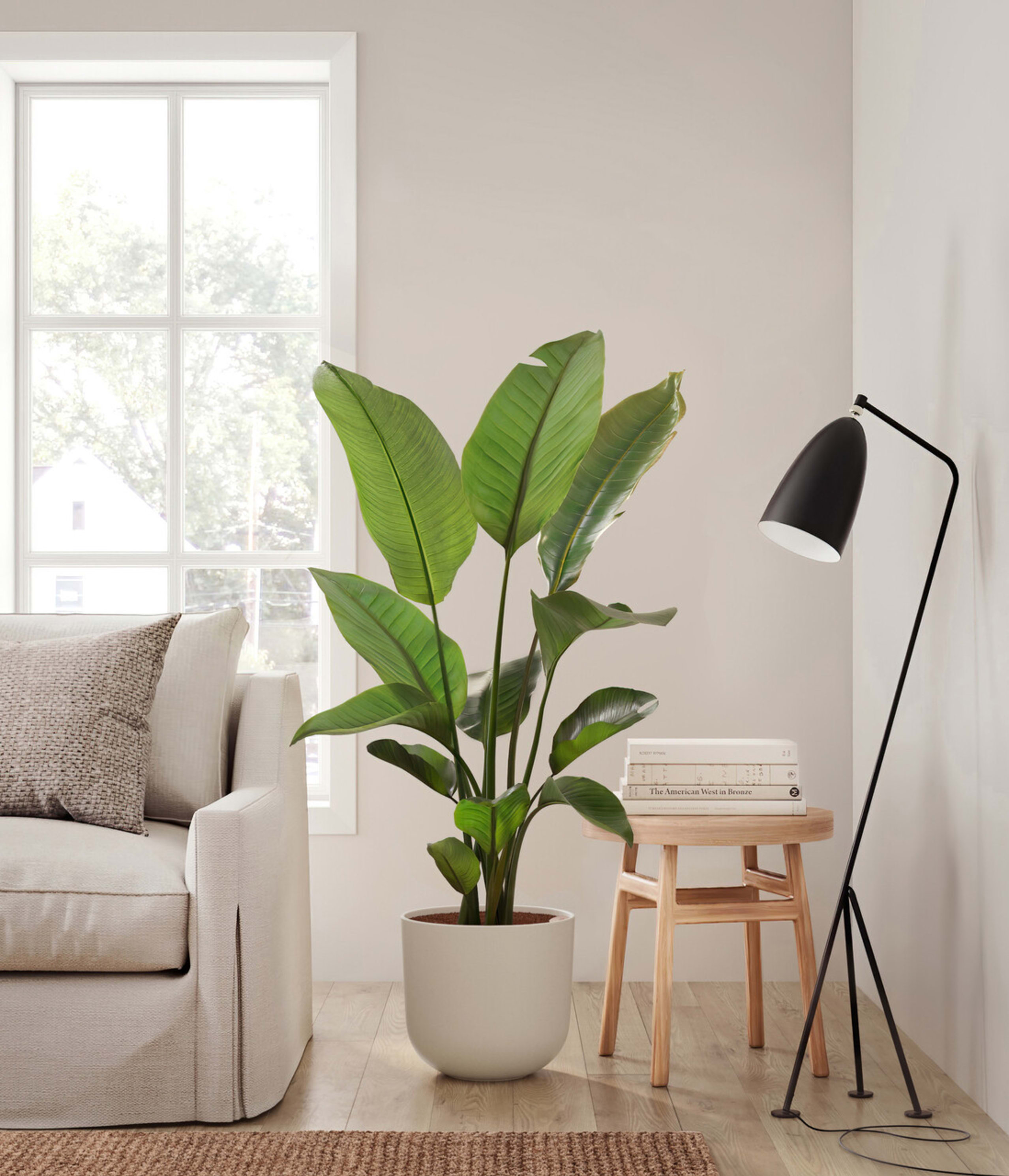Plant care library / String Of Hearts
String of Hearts Care
About String Of Hearts
The String of Hearts is a captivating hanging plant originating in South Africa, Swaziland, and Zimbabwe. Its entrancing dark green with variegated silver markings or cream, pink, and green heart-shaped patterned leaves have earned its reputation as the beloved favorite among succulent collectors.
Similar to its relatives in the same genus, the String of Hearts is an evergreen climber with stringy purplish stems that can comfortably traverse through other vegetation in its natural habitat. This plant may be grown as a hanging plant due to the vining or trailing nature of its stem, but it may also thrive when trained up small trellises and topiary frames.
Other common names
- Rosary Vine
- Chain of Hearts
- Ceropegia woodii
- C. woodii
- Collar of hearts
- Hearts entangled
- Hearts-on-a-string
- Sweetheart vine
How Often Should I Water My String Of Hearts
With easyplant, watering your String of Hearts is simple. Make sure to check the easyplant reservoir once a month and fill it when empty, and you're all set!
Without an easyplant self-watering pot, keep your string of hearts hydrated during the spring and summer by watering it once or twice a week. However, during fall and winter, when the plant goes dormant, only water every two weeks - just make sure to let the soil dry in between! Excess moisture can cause leaves to turn yellow and root rot, so be mindful not to overwater your string of hearts.
String Of Hearts Light Needs
String Of Hearts grows best in a space with bright indirect light, where the sun rays are diffused, and can also adapt to spaces with bright direct light, where the sunlight streams inside directly. Avoid placing it in spaces with low light or spaces without natural sunlight.
Position your String of Hearts in a place where it can be exposed to plenty of bright, indirect light. For optimal growth, you may also want to give the plant small doses of direct sunlight; however, too much direct sun will singe its leaves. Since this specific species does not thrive under low-light conditions, ensure that it is kept adequately lit at all times.
Position your plants a few feet away from windows facing south or west to get the best results. Alternatively, placing them directly in front of a north or east-facing window will also work well.
String Of Hearts Plant Care
The String of Hearts plant is a natural climber, so it’s essential that you provide it with something to climb on — such as a moss pole or trellis. This will help encourage growth and promote a fuller appearance.
When your string of hearts gets too tall, or the stems become long and lanky, it's time for a trim. You can simply snip off any extra stems to promote a fuller, bushier appearance. Rotate your String of Hearts around 1/4 turn monthly to ensure an even light distribution.
The String of Hearts is also prone to mealybugs and spider mites if not kept in the proper conditions, so make sure to inspect the plant from time to time for signs of pests. The best way to treat any pests is by using an insecticidal soap or neem oil spray.
How Big Do String Of Hearts Plants Grow?
With the ideal warmth, moisture levels, and filtered light conditions, the string of hearts plant will grow rapidly and bloom abundantly, reaching up to 12 feet long in natural environments. As a houseplant with ideal conditions, the String of Heart will reach maturity in approximately five years.
To ensure that your string of hearts remains lush, you'll want to place them in an area with ample indirect light. Additionally, consider trimming the vines from time to time; this will help foster growth and a fuller appearance.
Temperature & Humidity
If you want your String of Hearts to thrive, its environment should be kept between 60-80 degrees Fahrenheit. Cold temperatures below 41 can damage the plant, so ensure it's in an area that won't dip too low.
Additionally, try and provide 40-50% humidity for optimal growth; although succulents are typically more resilient when exposed to drier conditions than other plants, they will still benefit from a humid atmosphere.
Are String Of Hearts Toxic for Pets & Kids?
Not only is the String of Hearts a completely non-toxic plant, but it also has the added benefit of cleansing your air naturally. Whether your household has pets and children or not, you can rest assured knowing the String of Hearts is a completely safe and non-toxic addition to your home.
Troubleshooting Common Problems with String Of Hearts
The String of Hearts is known as an easy plant to grow indoors as it is very resilient and can cope with periods of neglect relatively well. That being said, overwatering is the most common cause of death for String of Hearts plants. If exposed to too much water, root rot can eventually lead to its demise. Before it's too late, repot your plant in clean soil and begin propagating it if you notice any signs of root rot.
Propagating String of Hearts plants is quite simple and can be done through stem cuttings. Cut a healthy stem section that is around 4-6 inches long and place it in water or a well-draining soil mixture. Keep the soil moist and provide bright, indirect light. Within a few weeks, roots will begin to form, and new growth will emerge from the cuttings. This is a great way to save a struggling plant and create new ones.
If the leaves on your string of hearts are curling, it can be due to inadequate lighting. However, it can also occur due to the plant's natural growth pattern or pests. When grown indoors, the foliage development decelerates, and leaves don't become as thick as when grown outdoors. For Ceropegia Woodii, growing outdoors with a little indirect light will result in fuller leaves that are less likely to bend inward.
A common misstep when growing a Chain of Hearts is to allow it to become too dry; this often results in leaves that are withered and shriveled, particularly on new growth, as the foliage is still thin and unable to retain much moisture. To solve this issue, the solution lies in increased watering - though be sure your potting mix has excellent drainage so that roots are kept from sitting in soggy soil for extended periods of time.
Frequently Asked Questions about String Of Hearts Plant
- How do you care for String of Hearts?To care for your String of Hearts, make sure to provide it with enough indirect light and let the soil dry out between waterings. Additionally, humidity should be around 40-50%, and temperatures should stay between 60-80°F (15-27°C).
- Do String of Hearts need sun?Your String of Hearts needs to be in a spot with plenty of indirect sunlight—a little direct sun is great, but too much can damage the leaves. Unfortunately, this plant isn't suitable for low-light conditions.
- Is String of Hearts easy to care for?String of Hearts is considered to be an easy-care plant. If you provide it with enough light and water, it will thrive in your home. Additionally, the Chain of Hearts only requires a little pruning or special attention beyond normal care.
- How often should I water String of Hearts?Depending on the light level, watering could be anywhere from once a week to once every two weeks. Check the soil to ensure it's dry before watering, as overwatering can lead to root rot. With an easyplant self-watering planter, you can take the guesswork out of watering as it helps to maintain the proper moisture levels.

 Small Plants
Small Plants Medium Plants
Medium Plants Plants Collections
Plants Collections Large Plants
Large Plants Huge Plants
Huge Plants